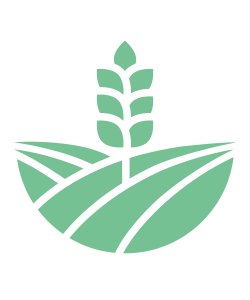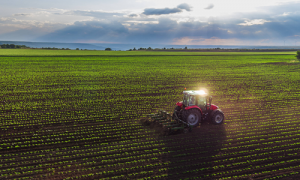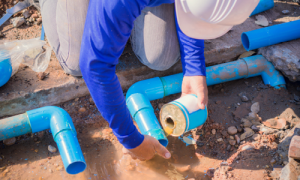Smart Agriculture & Environment
Climate Change and Population Growth drive IoT Adoption
The world’s population is expected to reach almost 10 billion people by 2050 and may peak at more than 11 billion by the end of the century, boosting demand for food quantity and diversity by at least some 50 percent[1]. This surging demand will need improvement in greater food production and distribution capacities, putting increasing pressure on the entire agribusiness chain and especially on farmers, growers and breeders. Producing more means improving yields, anticipating of climatic hazards and streamlining farm and production equipment management. Farming practices themselves must evolve to gradually give way to more automated and efficient solutions, so that farmers can concentrate on know-how and not on manual, repetitive or non-value-creating tasks.
At the same time, climate change is increasingly having significant and sometimes opposite effects on water availability and temperature fluctuations, leading to the multiplication of dramatic climatic events. This also strengthens the interdependence between agricultural production and knowledge of natural and climatic events. Some data:
- Climate change increasing temperatures on the planet and more variable rainfalls are expected to reduce crop yields in many tropical developing regions, where food security is already a problem[2] and by 2030, water scarcity in some arid and semi-arid places will displace between 24 million and 700 million people[3].
- Climate change impacts are most felt through changing hydrological conditions including changes in snow and ice dynamics[4].
- In other geographies, on the contrary, by 2050, the number of people at risk of floods will increase from its current level of 1.2 billion to 1.6 billion and, if in the early to mid-2010s, 27% of the global population (1.9 billion people) lived in potential severely water-scarce areas, this number will in 2050 increase to 2.7 to 3.2 billion people[5].
IoT solutions alone cannot solve these global challenges. However, they can help to better understand and measure these evolutions, to anticipate events, to improve their predictability in order to adapt our practices, to produce more while being more economical and respectful of natural resources and to reduce our environmental impact.
[1] http://www.fao.org/3/a-i6583e.pdf
[2] https://www.who.int/features/factfiles/climate_change/en/
[3] https://www.unwater.org/publications/water-changing-world/
[4] https://www.un.org/press/en/2019/sgsm19607.doc.htm
[5] https://public.wmo.int/en/resources/united_in_science
What can IoT do for Smart Agriculture & Smart Environment?
IoT solutions can help to imagine, design, deploy and operate intelligent applications to provide real-time insights on activity and environment to deliver better actionable data for appropriate decision-making. This thus remove manuals tasks, improve efficiency, automate measures, generate alerts and streamline operations, at scale.
Smart Agriculture
Precision Agriculture covers the wide range of IoT solutions leveraged to improve the agricultural practice, like Soil Health Analysis and Monitoring, Irrigation Monitoring and Water Management and Weather and Environment Monitoring.
Smart Farming is more focused on IoT solutions for food production processes, like Pest Control, Farming Equipment Monitoring & Tracking, Silos, Tanks and Storage Assets Monitoring, Food Processing and Safety or Aquaculture.
Cattle Monitoring and Tracking is another major activity requiring IoT solutions for Livestock Health and Mobility Monitoring, Livestock Tracking and Monitoring or Livestock Feed Monitoring.
Finally, Greenhouses Monitoring is a fast-growing business using IoT solutions for Growing Conditions Monitoring or Greenhouse Security.
Environment & Climate
IoT Solutions increasingly help to analyze and monitor climate changes for better understanding, faster anticipation and more efficient warning. This is especially the case for Air Quality and Pollution, Weather Monitoring and predict Climatic & Natural Hazards. IoT solutions also help to increasingly ensure Wildlife Protection in reserves and natural parks.
How Kerlink can power Smart Agriculture & Smart Environment IoT Use Cases?
Comprehensive IoT Connectivity Portfolio
Since January 2014, when the company launched the world’s first carrier-grade outdoor LoRaWAN gateway, Kerlink has been the leading provider of industrial-grade IoT connectivity solutions, powered by LoRaWAN technology.
Trusted by large mobile networks operators, leading IoT new entrants and private operators, Kerlink delivers:
- best-in-class carrier-grade LoRaWAN outdoor gateways, industrial-grade LoRaWAN indoor gateways,
- best-of-breed LoRa Network Server and cutting-edge IoT Network Operation & Management tools, with real-time, powerful and easy-to-use monitoring tools to ensure optimized coverage, maximum IoT network uptime and IoT connectivity lasting performance.
- and value-added IoT applications like native network-based and GPS-free Geolocation, to track and locate all IoT sensors and devices connected to the LoRaWAN network (using triangulation, called Time Differential on Arrival – TDoA), and IoT Device Management, to remotely set-up, configure and monitor remote sensors and devices to ensure optimized connection to the network and grant maximum availability.
“Kerlink is recognized as one of the top global providers of LoRaWAN network infrastructure and solutions, with a history of delivering top quality IoT network hardware and software for mobile network operators in Europe, South Asia, South America and the U.S.”
Adarsh Krishnan, Principal Analyst of ABI Research
Best-in-class and Secure by Design Industrial-Grade Solutions
Kerlink R&D is mastering hardware development and embedded software design to create industrial-grade LoRaWAN gateways built on high-capacity systems, robust and long-term design elements, enhanced radio performance and interference mitigation. This carrier-grade robust design ensures the best radio performance and the best energy efficiency and reliability, even in harsh environment.
“Tata Communications’ LoRaWAN networks offer an overall availability higher than 99 percent, and Kerlink carrier-grade solutions have demonstrated their robustness and reliability through three monsoon cycles in India,”
Eric Torres,
VP and Head of Business Operations and Solution Engineering,
Tata Communications Transformation Services
Kerlink also offers a unique heightened built-in level of security for its indoor and outdoor IoT gateways, granting unrivalled native security by design for IoT networks and infrastructure. Delivering first-class performance, robustness, scalability and simplicity of use, Kerlink best LoRaWAN IoT Solutions are designed to cost-efficiently power private and shared IoT networks for smart agriculture and smart environment use cases. Kerlink’s best performance LoRaWAN gateways are perfectly designed to connect IoT sensors and devices in wide rural areas and to offer the best value for money and total cost of ownership (TCO), over time.
Kerlink is also constantly improving its efficiency, operations control, and processes through its Quality Program and is ISO 9001-2015 certified since mid-2016 for its “design, development, and sales process of network solutions for the Internet of Things”.
Outstanding Customer Support
Kerlink is recognized for the quality of its expert technical and customer support team. Having geo-relevant, flexible and scalable field operations and support, Kerlink has invested heavily on personnel, systems and training to ensure its customers are supported throughout their IoT journeys. From IoT gateways customer-specific prestaging, frontline support desk, project management, expert and tailored professional services to customer success management, Kerlink cares about its customers’ journey to deliver the best overall customer experience.
Open Interfaces and Strong Ecosystem of Partners
Kerink is a founding and board member of the LoRa Alliance since 2015. Kerlink crystalizes a strong ecosystem of LoRaWAN partners to integrate its best-in-class IoT connectivity building blocks with innovative IoT sensors and devices and smart vertical IoT applications, to deliver end-to-end IoT solutions. Because one size does not fit all and that each project is unique, Kerlink capitalizes on API-first design, open interfaces and standard protocols to ease the integration with partners and deliver customized IoT solutions. IoT connectivity is not a commodity and remains the spine of any IoT solution. Communication is everything!
Why is LoRaWAN relevant for Smart Agriculture & Smart Environment?
LoRaWAN Low Power Wide Area Networks (LPWANs) using LoRa communication can help farmers, growers, breeders and the entire agribusiness to better monitor, control and manage every aspect of their activity, so as to reduce risks, streamline operations, increase yields, boost revenue and improve the return on investment (ROI) of their exploitation. LoRaWAN communication delivers the appropriate combination of key characteristics to ensure reliable, cost-efficient and futureproof connectivity to power smart agriculture and smart environment use case. Learn why.
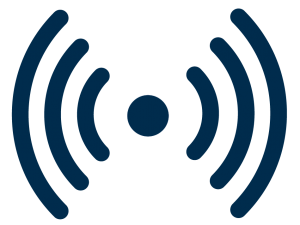
Long-Range Communication
Connectivity has always been an issue for rural regions and areas, mainly due to the lack of / poor coverage proposed by mobile network operators and the expensive price of their cellular subscriptions. LoRaWAN technology now offers long-range communication (up to 25 km) to connect distant outdoor IoT sensors, on wide rural areas, and flexible network design to ensure optimized and tailored coverage, in all types of natural environments. This is the best IoT connectivity for rural use cases.
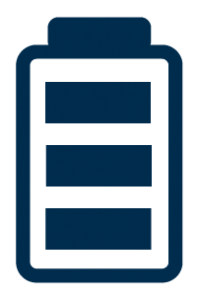
Low Power Consumption
LoRaWAN technology has been specifically designed and optimized to reduce the power consumption of IoT sensors and extend their battery lifetime up to 15+ years, making LoRaWAN-enabled IoT sensors able to work between 5 and 10 times longer than sensors using traditional cellular networks. The extended lifespan of sensors, tags and trackers used on the field increase peace of mind for operations and improve visibility on the return on investment (ROI).
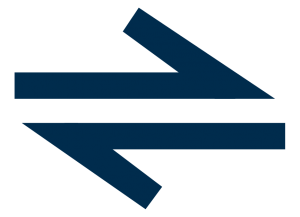
Bi-directional communication
LoRaWAN protocol enable fully bidirectional communications to collect data from deployed IoT sensors, but also to send messages to the devices used on the field. This can be particularly useful to remotely control and manage assets like gates, fences, tanks silos, feed dispensers, water pumps, irrigation valves or generators, for example.
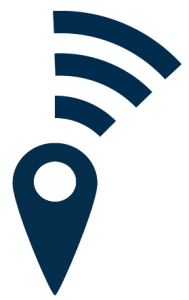
Native geolocation
LoRaWAN technology offers native geolocation to locate IoT sensors connected to the network. This network-based solution is using triangulation (called Time Differential on Arrival or TDoA), a GPS-free geolocation technology that does not require additional power nor additional costly hardware component, and does not increase energy consumption of located devices. Thus, any LoRa-enabled device connected to the network, whatever its type, can be located and tracked.
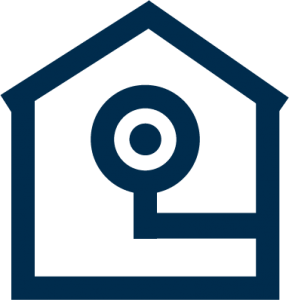
Deep indoor coverage
LoRaWAN IoT Communication delivers deep indoor penetration, enabling robust IoT connectivity to reach sensors and devices in remote indoor or underground locations in rural areas, without consuming extra power. This is especially relevant to connect greenhouses and equipment located in operating buildings or devices located in wells or underground shelters, like water pumps, irrigation valves, energy meters or water meters.
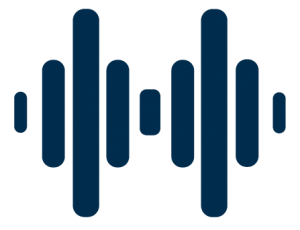
Free Unlicensed Frequencies
LoraWAN protocol operates on license-free and cost-free ISM (Industrial, Scientific, Medical) spectrum – EU 868 MHz, AS 923 MHz, US 915 MHz – allowing any farmer, grower, breeder or agribusiness to quickly and flexibly deploy and operate private or shared IoT networks without acquiring a license from the regulator or paying fees to use a license. This considerably simplifies the access to this IoT connectivity and reduces initial investment and operating expenses, thus enabling the available capital to be invested in farm assets and production equipment.
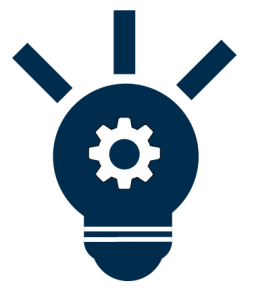
Open Standard and Growing Ecosystem
LoRaWAN technology leverages an open protocol approach, led by the LoRa Alliance which federates the specification, development and deployment of this standard, elaborates certification guides, and ensures interoperability between all IoT connectivity and IoT sensors providers. This grants futureproof IoT solutions, with no vendor lock-in, a seamless and quick deployment, and the ideal scalability and versatility to connect various cost-efficient smart agriculture and smart environment use cases.
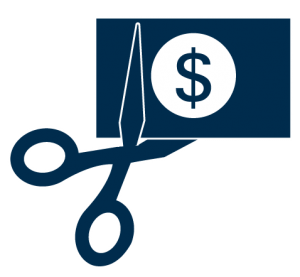
Cost-Efficiency
LoRaWAN communication offers the lowest cost for IoT network infrastructure deployment and maintenance over time, thanks to its long range, redundancy, scalability and versatility. IoT connectivity usage is also very cost-efficient as it does not require any license fees. A LoRaWAN LPWAN (low power wide area network) is ten times less expensive than a cellular network. This leads to streamlined agribusiness capital expenditure (Capex) and operational expenses (Opex) and allows farmers, growers and breeders to concentrate investment on farm assets and production equipment.
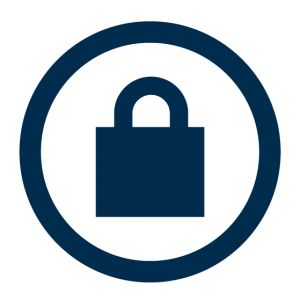
High Security
LoRaWAN protocol is using 128-bits Advances Encryption Standard (AES) algorithms to ensure end-to-end high encryption with two combined layers: one for the IoT network provider – to ensure the mutual authentication between a LoRaWAN-enabled IoT sensor and the LoRaWAN IoT network used – and another for the user – to ensure that the IoT network provider does not have access to the end user’s collected data and application -. LoRaWAN technology is one of the few wireless technologies to implement end-to-end robust encryption for data (called payloads) exchanged between the IoT sensors and IoT applications servers. This grants future-proof security and confidentiality of bi-directional data exchanges for smart agriculture and smart environment applications.
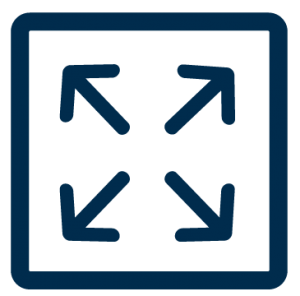
High Scalability and Capacity
LoRaWAN technology enables high scalability and capacity networks to support thousands of connected IoT sensors and devices and transmit millions of messages, making it the ideal choice for long range and low power deployments in rural areas. LoRa LPWAN (low power wide area network) high capacity and multi-usage capabilities can support high device capacity on a single IoT network. Industrial-grade and carrier-grade IoT connectivity solutions, powered by LoRaWAN protocol, offer performant, robust and reliable connectivity for private or shared networks to grant a unified and scalable multipurpose infrastructure, to efficiently serve smart agriculture and smart environment use cases.



